Frost heave is no stranger to the northern areas of the country. It is responsible for the constant road construction, the uneven sidewalks in your neighborhood, and possibly your home’s foundation issues.
So, what can be done? And, what is the mechanism behind this nasty phenomena?
Our geotechnical engineering experts are here to teach you what frost heave is, how it occurs, signs of damage and repair and prevention strategies.
Are you ready? Let’s get started.
What is Frost Heave?
According to Merriam Webster dictionary, it’s “an upthrust of ground or pavement caused by freezing of moist soil”. When this frozen ground “upthrusts”, it causes uneven sidewalks, pavement to lift up and crack, and foundation walls to bow.
It’s not pretty.
Here are some photos of what this could look like.

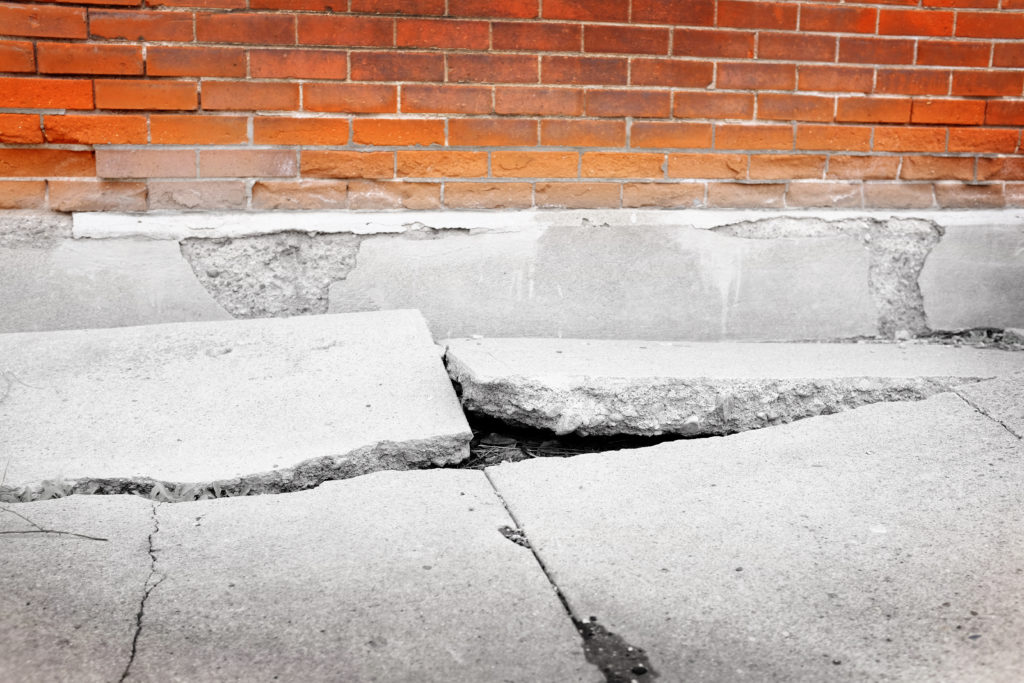
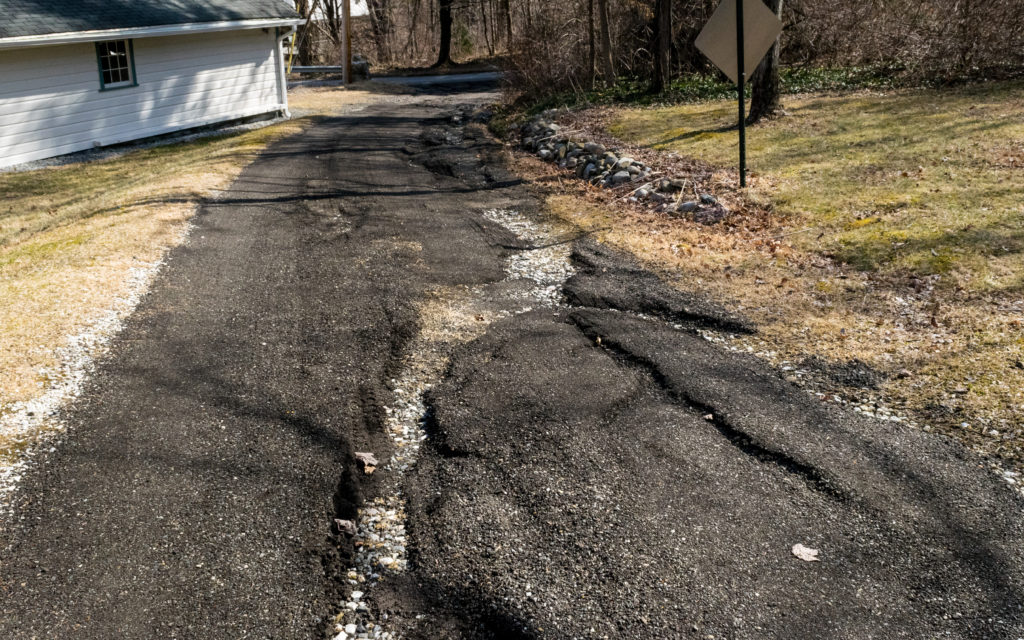
If you learned anything from the photos above, it’s that frost heave can cause some serious damage.
How does Frost Heave Occur?
It was once believed that frost heave occurred because “mother stones” were giving birth to smaller stones which were forcing their way to the surface and presenting as frost heave.
Isn’t that interesting?
People today know that this simply is not true. The real mechanism behind frost heave has to do with water inside of soils, freezing when temperatures drop and then melting again when temperatures rise.
In order for frost heave to even exist, it needs:
- Water
- Moisture holding soils
- Freezing temperatures
Yep, that’s it. However, if even one of these components is missing, frost heave cannot occur.
Now here is where it gets interesting…and a bit technical.
For the longest time, scientists and geologists have thought that frost heave was caused by the expansion of water when it freezes. We are starting to see that this is not quite right.
Professionals now have shown that the water is not expanding, but rather forming ice pockets (aka lenses). And, these ice pockets continue to be fed by water in areas of the soil with warmer temperatures via capillary action.
Capillary action refers to the movement of liquid through or along another material against an opposing force such as gravity.
In the case of frost heave, water (the liquid) will move against gravity (the force) to reach the growing ice pockets in the soil. Sometimes water may even migrate 1-2 meters in distance.
The size of these ice pockets varies, ranging from as tiny as an eyelash to as large as a couple feet thick. This has a lot to do with the water supply available. The more water contained in the soil, the larger the ice pocket will become.
As these ice pockets grow, they force the soil above to move upwards. This is how frost heave occurs.
The photo below from North Dakota’s Department of Mineral Resources sums up this process beautifully.

The larger these ice pockets grow, the more heaving that will occur.

You may be wondering why some areas (with the same regional temperatures) have more heaving than others. Well, a lot of this comes down to soils.
Let’s get into this next.
How Soils Contribute to Frost Heave
Have you noticed that your community doesn’t struggle with the aftermath of frost heave, but your friend in the neighboring community does?
Why is that?
Well, it’s most likely related to soils and how they interact with the environment. We’ve talked about soil type and quality in other blogs.
So, what do soils have to do with the amount of frost heave taking place on your property?
They are one of the 3 conditions needed for frost heave to occur.
- Water
- Moisture holding soils
- Freezing temperatures
If you build your driveway on the wrong soil, you may be in for a treat in the spring. This is because some soils tend to allow for more water movement via capillary action and therefore more ice pockets form resulting in heaving.
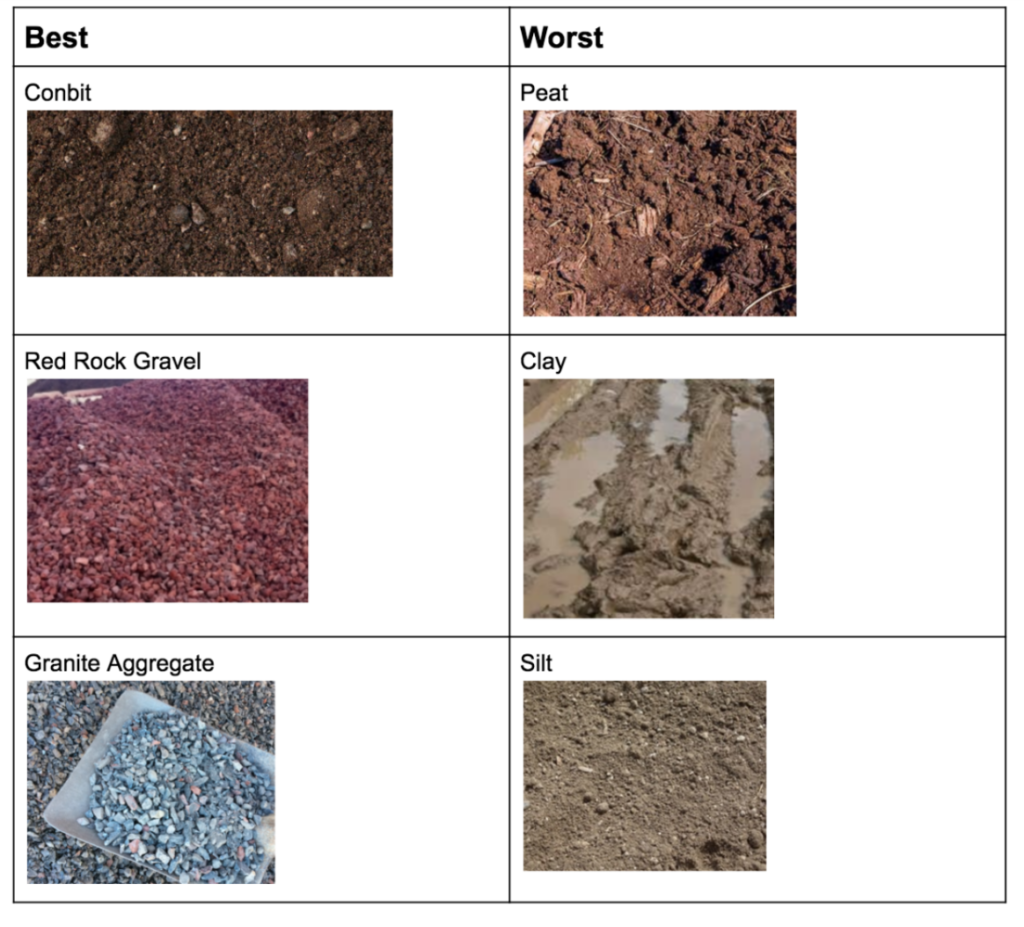
We created the table above for another blog geared at eliminating standing water in yards. However, it is still very applicable here.
Examples of moisture holding soil:
- Peat
- Silt
- Clay
Examples of non-moisture holding soils:
- Conbit
- Red rock gravel
- Granite aggregate
It is important to remember that we must also be concerned with how various environmental factors interact with soils.
For example, if your house was built on clay soils, you are not guaranteed to have frost heave issues. If you have a good water management plan in place, you may be just fine.
So, what makes for a “good” water management plan? How can you be sure that water is not having a negative impact on your property?
Let’s jump into this next.
How to Prevent Frost Heave
Preventing frost heave is paramount to the longevity of your driveway, sidewalks, or home.
We know that frost heave needs water, freezing temperatures and moisture holding soils to occur. So, it makes sense to eliminate these elements to stop frost heave, right?
The answer….we just need to stop one of these elements from occurring. And, since we can’t halt freezing temperatures in their tracks, we will have to leave that one to mother nature.
We can, however, have somewhat of an effect on how much water is present and the soils we use for projects.
Of course, there are scenarios when we can’t control those elements, but we work with them to the best of our abilities.
In fact, geotechnical structural engineers have a solution for almost anything, starting with a great water management plan.
Let’s talk about strategies to eliminate frost heave.
1.Water management
- Gutters! Extensions! Downspouts!-Don’t ever underestimate the power of a functioning gutter system. Key word…functioning.
Here are some things that can go wrong with your system.
- Clogged Gutters: Clogged gutters completely defeat the purpose of having a gutter in the first place. They are meant to collect rain water as it flows off the roof. If gutters weren’t installed, the rain water would simply pour off the side of the building and gather around the foundation. Since we learned in the previous sections that certain soils hold more water and that more ground water means more capillary action…this is NOT a good thing. Frost heave, uplift and soil pressures can cause a plethora of foundation issues.
- Downspout dumping water around your foundation and held there with a poorly designed landscape border: Yikes, this is not a pretty picture.

On the plus side, at least a downspout is present here. You would be shocked how many homes actually have gutters leading to an open hole (where a downspout should be) that dumps water near the foundation. See the example below. The lack of a down spout means that water will not be pouring everywhere around your foundation, but it is still being dumped in some sections. As we explained above, this is bad for your foundation and makes it susceptible to frost heave.
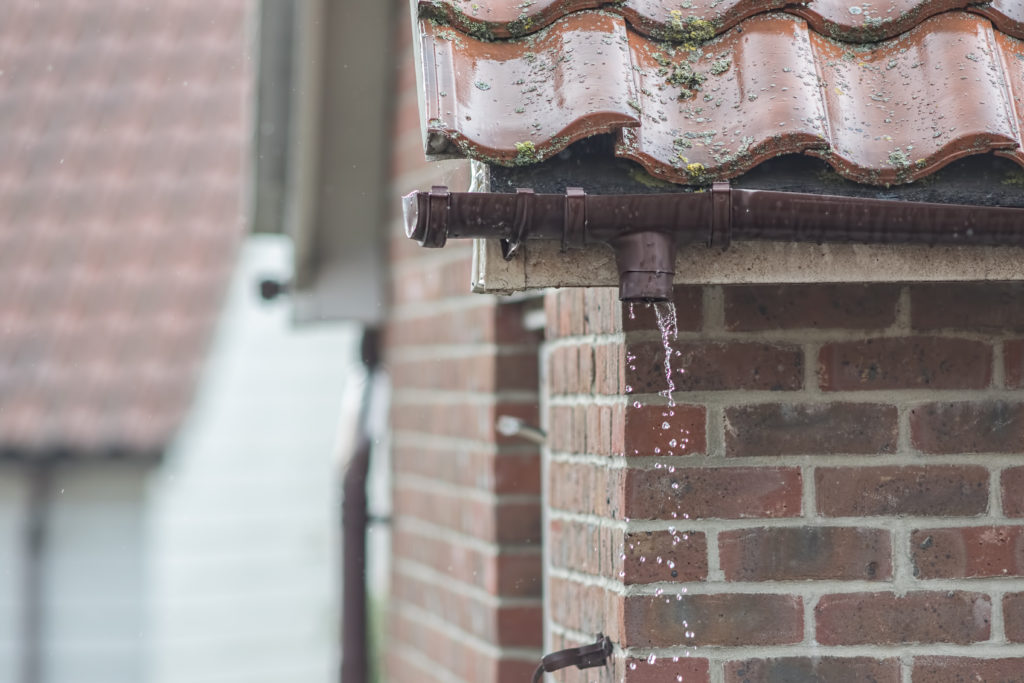
Let’s also briefly touch on the landscape border shown in the first photo. That border is not doing this home any favors. Any water that is poured into this area will be trapped by that border. That is the opposite of what we want to do. The water should be given a pathway to move away from the foundation.
- Missing an extension- Here we do see a downspout, but the extension is missing. The extension would carry the rain water at least an additional 4 feet away from the foundation.
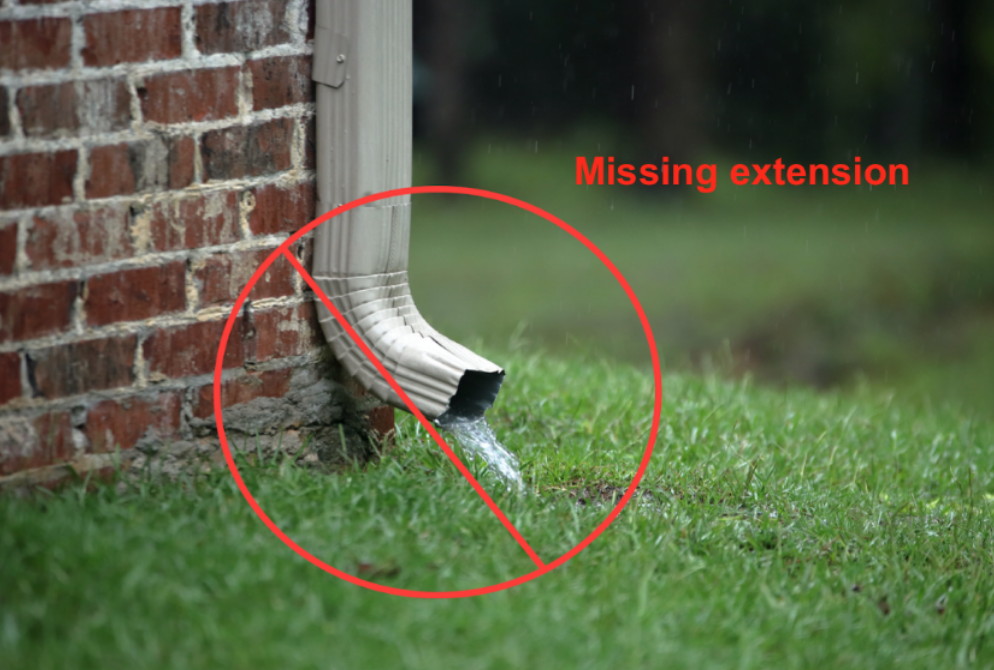
- Grading & Slope-
The next thing a good water management plan does to prevent frost heave is to call for good drainage practices. How so? Well, a positive slope must be implemented around your foundation & driveway.
If you don’t believe us, it’s also cited in the International Residential Code. Check it out.
A positive slope must exist around the foundation, walkways, and driveways with at least a 6” drop in elevation within the first 10 feet of the foundation (International Residential Code).
Have you ever heard of this before? Well, it’s crucial to prevent frost heave from occurring.
So, what is a positive slope and this elevation drop the code speaks of? Let’s look at some photos.
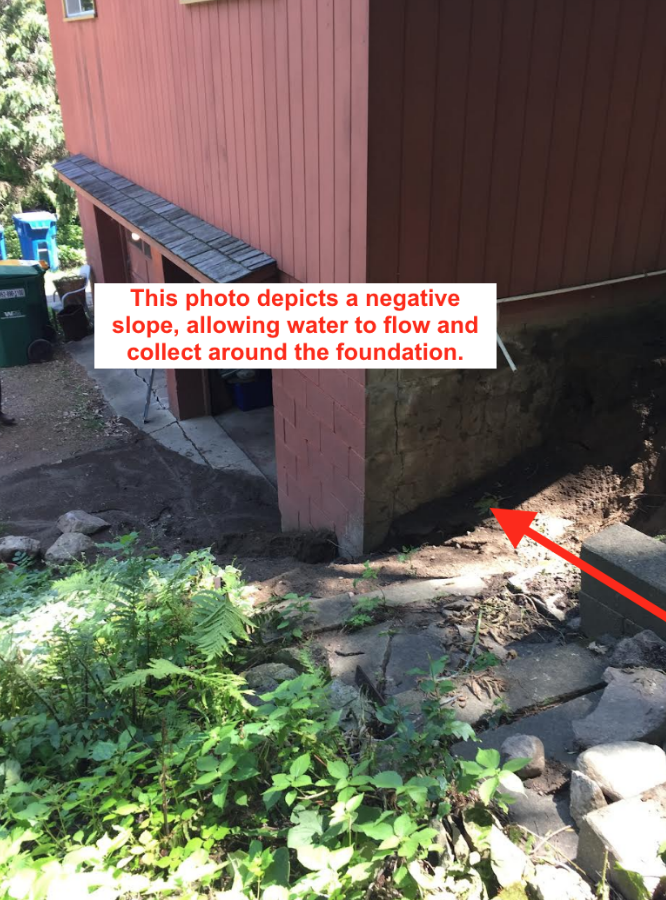
This photo is a great example of a negative slope. See how water can naturally and easily flow towards the base of the foundation? It’s no wonder the home had so many structural issues due to frost heave. The first step on the structural engineering repair plan was to re-grade and direct water away from the home.
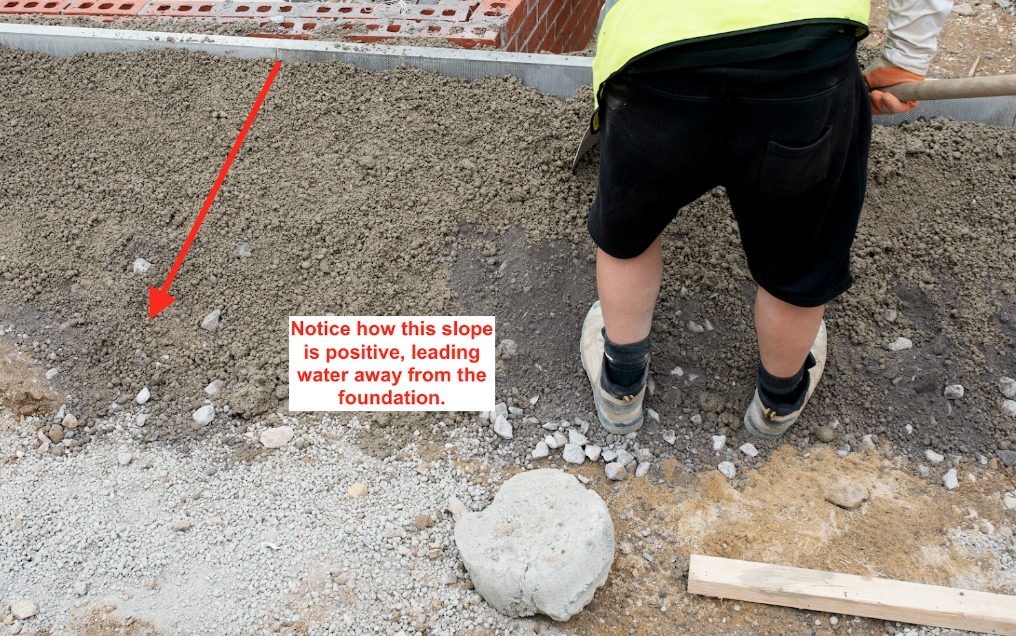
This photo shows an example of a positive slope. The grade slopes away from the house, guiding water away from the structure. This principle also applies to sidewalks and driveways.
Ok, so what about the second part of the code that describes “a 6” drop in elevation within the first 10 feet of the foundation”?
This means exactly what it says, within the first 10 feet of the foundation the grade must drop away at least 6 inches.
The Office of Energy Efficiency and Renewable Energy, a government site, has a great diagram to show this.
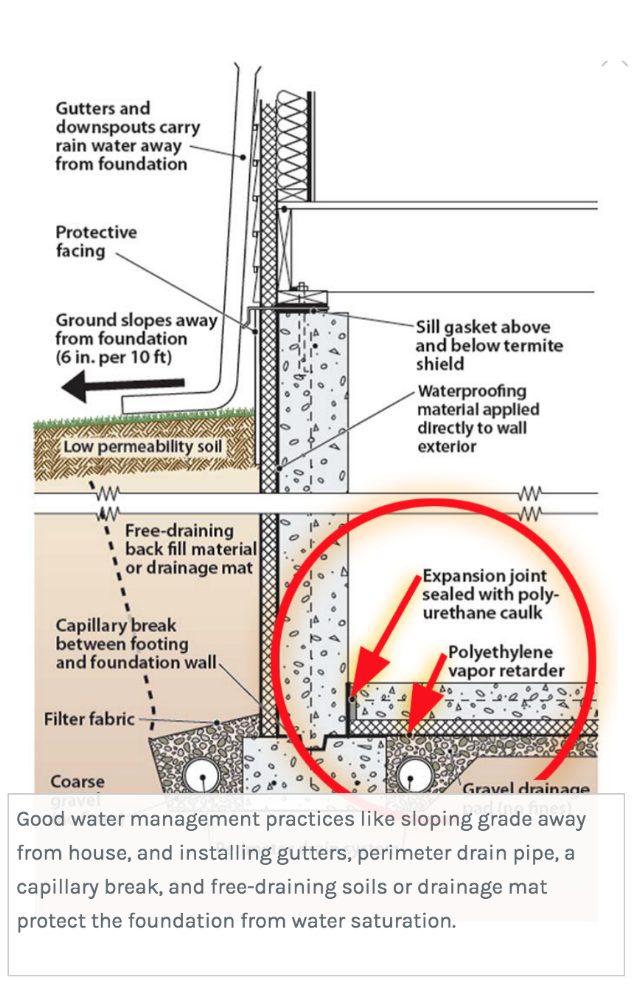
See how the ground is sloping away from the foundation. It will continue to drop away until it hits at least 6 inches of slope. This slope and drop in grade are essential for carrying water away from a foundation, driveway or sidewalk and ultimately fending off frost heave.
C. Water Traps-
So, we’ve talked about how important a gutter system is. We’ve also touched on positive slope and how it’s essential to prevent frost heave. One final category of a good water management plan has to do with water traps.
Now, we touched on this a bit already. In the gutter section we showed a photo of a landscape barrier holding water around the foundation. That is a water trap.
Here is another example.

That is one nasty plant border. The best thing to do here would be to rip that border out and work with a professional to create a positive slope and drop in elevation around the foundation. Otherwise, you can expect frost heave issues here especially if susceptible soils are present.
Keep in mind, not all water traps are landscape borders. Anything that holds water near your foundation could be considered a water trap. Perhaps a large tree root is blocking the flow of water. This is also problematic.
D. Avoid Planting Trees Near Your Foundation
I know, I know, I said that water traps were the last part of a good water management plan. Turns out, the trees will get the final word. Tip from the wise, do NOT plant trees near your foundation. Tree roots can penetrate your foundation making it extremely vulnerable to frost heave. Just don’t do it.
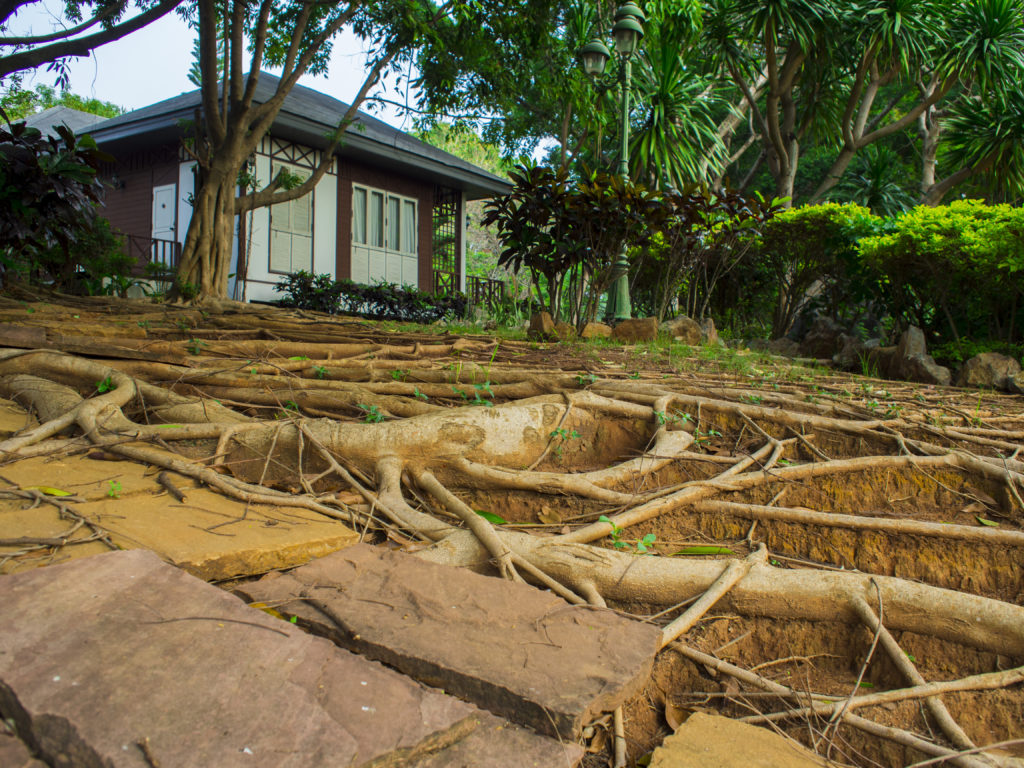
Ok, so we talked about 4 interesting factors that contribute to a good water management plan. Now, let’s look at another HUGE factor that can prevent frost heave from occurring.
Get a free quote on your project!
Ready to start your project? Reach out to Complete Building solutions and get a quote absolutely free.
2. Soil Replacements
In the soil section we talked about “good” soils versus “bad” soils. The type of soil your house, driveway or walkway was built on will matter in terms of preventing frost heave. For instance, you may be prone to more frost heave if your house was built on alluvial clay versus a gravel red rock aggregate type soil.
Now, sometimes you can deal with the bad soils by implementing an incredible water management plan as noted above.
However, there may be times when this simply isn’t enough OR the location of your property makes it nearly impossible to divert water.
In cases like this, a soil correction may be the best option.
Always have a knowledgeable structural or geotechnical engineer inspect your property before jumping to this conclusion though. These types of engineers specialize in soils and water diversion.
There may be other solutions to your frost heave issues that we did not discuss in this blog such as french drains, rain gardens or other more complex solutions.
Back to soil corrections, what are they? Well, essentially the bad soils are dug up, removed and replaced with a conbit or red rock gravel type soil.

Does this sound like a lot of work? Well, it is. However, it can make a whole lot of difference in preventing frost heave.
For example, one townhome complex complained of cracked walkways, crumbling driveways, and massive shifting happening with their garage aprons.
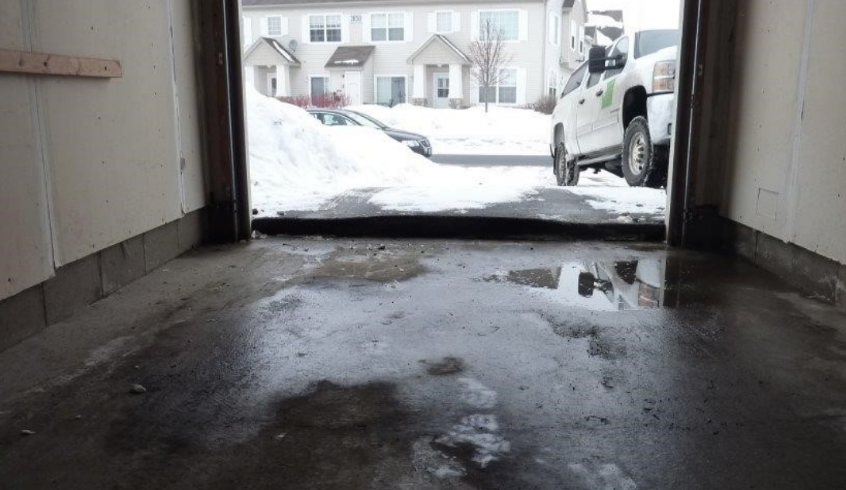
The above photo is just one example of the damage frost heave was causing to this modern townhome association.
Can you imagine trying to back your car out of that?
On top of the issues already mentioned, many buildings were experiencing foundation stress which showed up as:
- foundation cracks
- bowing
- cracked walls/ceilings
- sticky doors and windows
- crumbling/heaving walkways
- driveway heaving
You can see a few of these examples below.
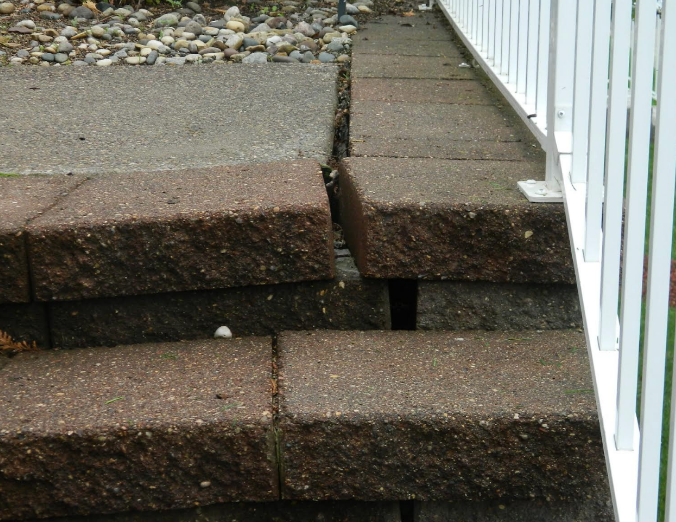
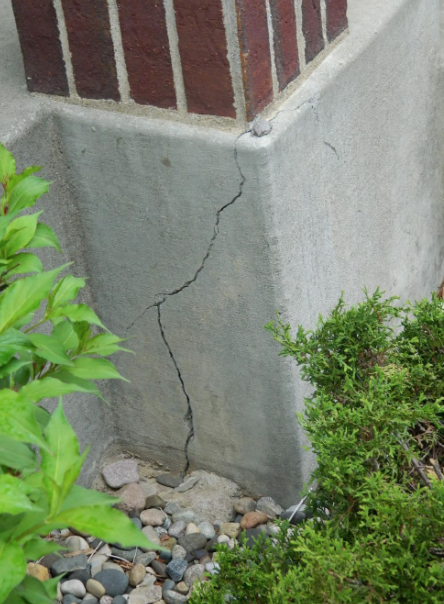
The site (and sight ha) was not pretty.
For various reasons, the structural and geotechnical engineers working on the project determined that the best solution was to implement a soil correction. This meant that all the clay soils around the foundation had to be removed and replaced with a proper compacted soil.
Check out some of these photos.
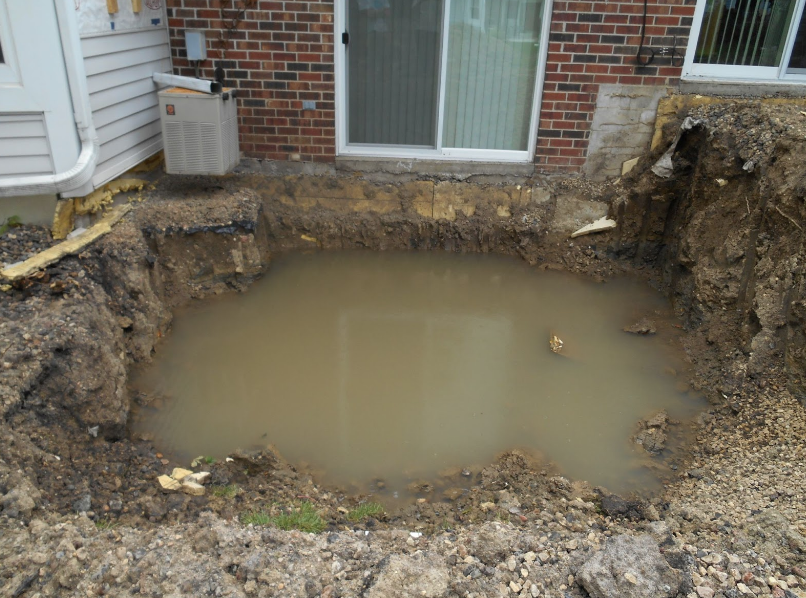
The photo above was taken towards the beginning of the soil correction process. Many of the townhome owners were absolutely shocked at how much water was actually present around their home. It made a lot of sense why frost heave was occuring so horrifically.
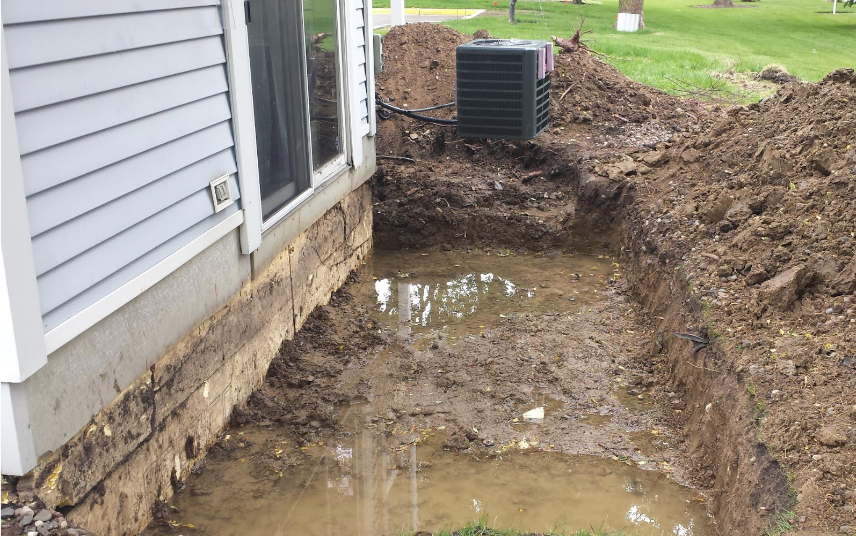
This photo again depicts clay soils saturated with water around the townhome’s foundation. These clay soils will all need to be removed and replaced with a proper soil.
Something else to keep in mind is that the soil type matters, but so does the installation. In order to prevent frost heave, soils must be compacted correctly during the installation phase. It would be devastating to go through this whole process and end up having the same frost heave issues on the other end.
The solution? Hire an amazing team of engineers and contractors that know what they’re doing. Pick their brain. Show them this blog. Best of all, get a referral from a happy customer.
Ok, so we’ve gone through 2 major preventative measures that can prevent frost heave from occurring: a water management plan & soil replacements.
Now, let’s look at some of the problems that frost heave can cause.
Does Frost Heave Cause Damage?

Hopefully after what you’ve read so far you know that it absolutely does.
Let’s talk about some specific ways that frost heave damages your home and property.
Buildings
Frost heave can cause many problems for buildings and other structures.
I will list some of the most common issues below:
- Ceiling & wall cracks: Ceiling and wall cracks can be a sign of structural movement within a home. Oftentimes, it is one of the first signs that something is not right.

- Foundation cracking or bowing: Not all foundation cracks are threatening to a structure’s integrity. However, if left unchecked the issues could persist and become more severe. This is why it’s so important to deal with any frost heave issues that are occuring. The solution could be as simple as repairing the crack with an epoxy and implementing a water management plan to drive water away from the foundation. More severe cracks or bowing should be looked at by a structural engineer immediately. To learn more about foundation repair options, click here.
- Slab cracking: Again, this is one of those situations where cracking is harmless. But, if the issues persist, a more sinister situation could arise. Take matters into your own hands to save money and work in the long run.
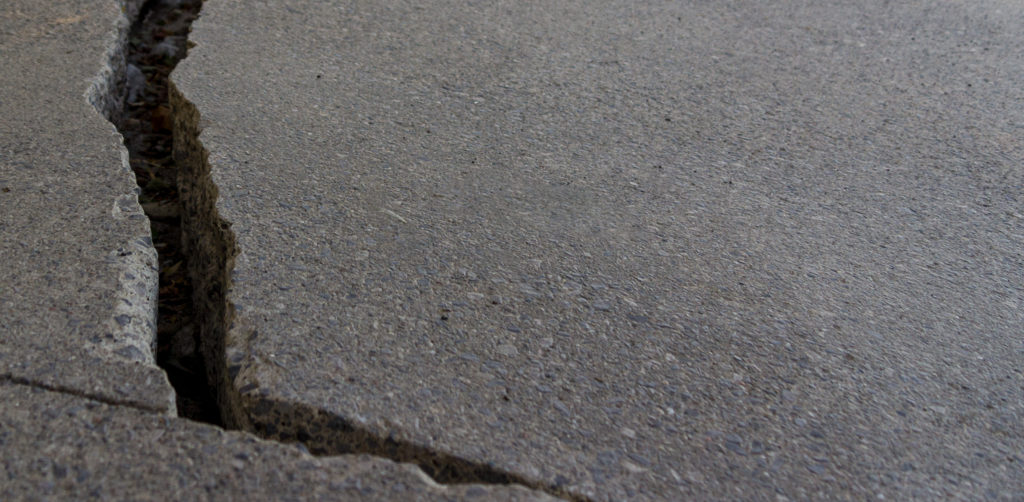
- Sticky doors & windows: When a building experiences movement, doors and windows may no longer shut properly. If you suddenly noticed this happening in your home, it may be time to hire a structural engineer to investigate the issue.
- Steps pulling away from the house: Another thing to watch for is when stairs or steps start to pull away from the house. This is indicative of a structural issue at play. As we know, frost heave tends to be at the root for many issues like this.
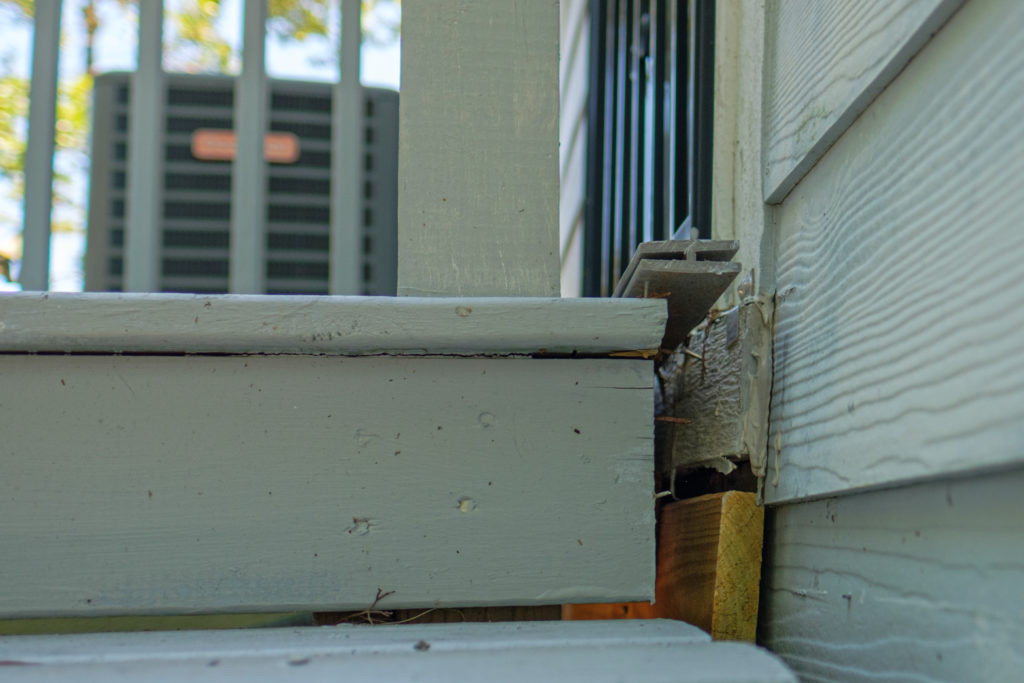
Concrete & Asphalt Driveways
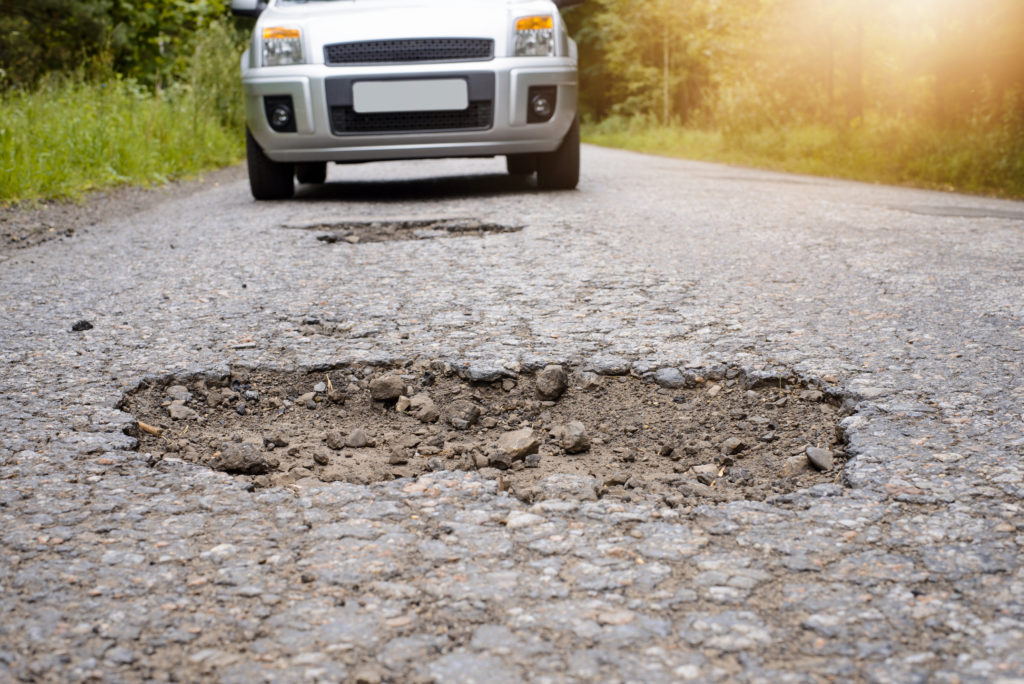
Driveways can also be affected by frost heave. There are several components that go into a lasting driveway.
- Installation: If installation is faulty, you can be sure you will see cracking or other signs of frost heave. A really good asphalt or concrete professional will understand how to properly compact soils (and use the correct soils) prior to laying asphalt or concrete.
- Drainage: Water is enemy #1 when it comes to your asphalt or concrete driveway. Make sure the land around your driveway slopes off to prevent pooling water. Also, check those gutters! If you have a downspout dumping water onto one corner of your driveway, change that. The more you can keep water away from your driveway, the better.
- Bad soils: Unfortunately, some soils are just capable of holding more water. More water in the soil means more frost heave. If you have tried everything you know to do, hire a geotechnical structural engineer to take a look at your driveway. They may be able to assist you with a long term option such as: french drains or a soil correction.
Side note: Check out the photo below. Notice how the tree roots (in conjunction with frost heave) have slowly been deteriorating the road?
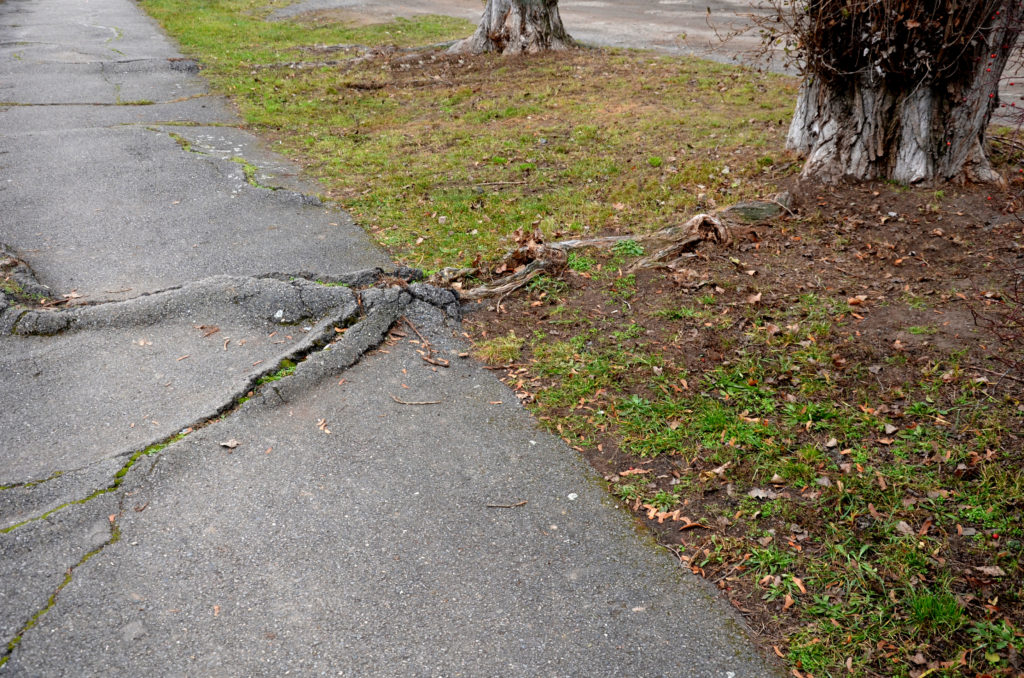
If these components are not considered you may experience:
- Heaving driveways
- Sinkholes
- Cracking
- Chipping
- Uneven areas

Walkways
Walkways really are no different than a concrete or asphalt driveway. Again, it comes down to water. Water will always look for the route of least resistance. If you live at the bottom of a hill, this principle will haunt you. Be sure to contact a drainage professional to help you if you notice:
- Cracked sidewalks
- Heaving sidewalks
- Uneven sidewalks
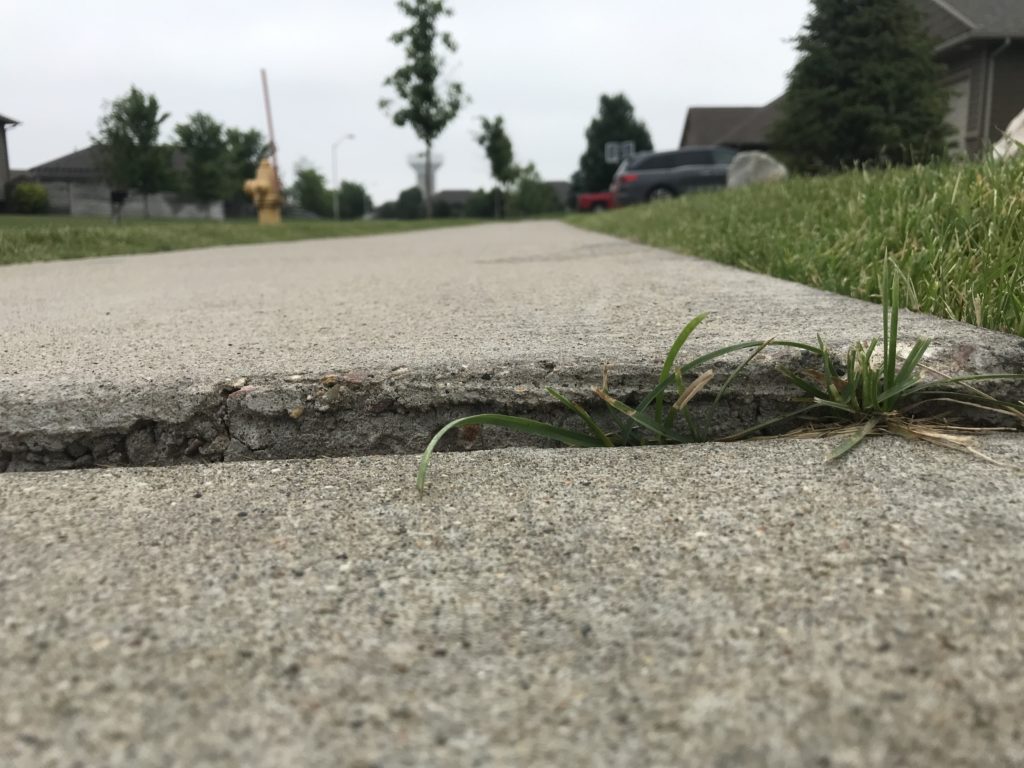
The issues listed above can become a huge safety issue especially in townhome or condo association cases. If this is happening in your association, please reach out to a knowledgeable engineering firm with geotechnical experience to assist you.
Is Frost Heave Covered by Insurance?

We decided to cover this topic because we get asked this question more than you would think. Unfortunately, the answer is no. Home insurance does not cover frost heave damage, it’s almost always listed as an excluded peril.
Water damage is also not included in most homeowners insurance policies. Water damage can happen simultaneously with frost heave which of course would make you exempt. This is why it’s so important to get a handle on your yard’s water issues.
Well, that’s it. Thanks for sticking with us through the long frost heave journey. Please let us know if you have any further questions about your specific frost heave issues. Our geotechnical engineering experts are here to help! Feel free to call us at 763-544-3355.



